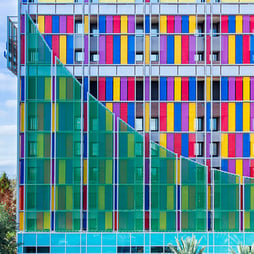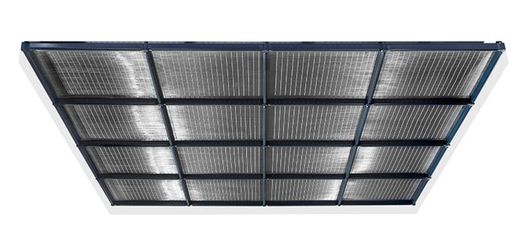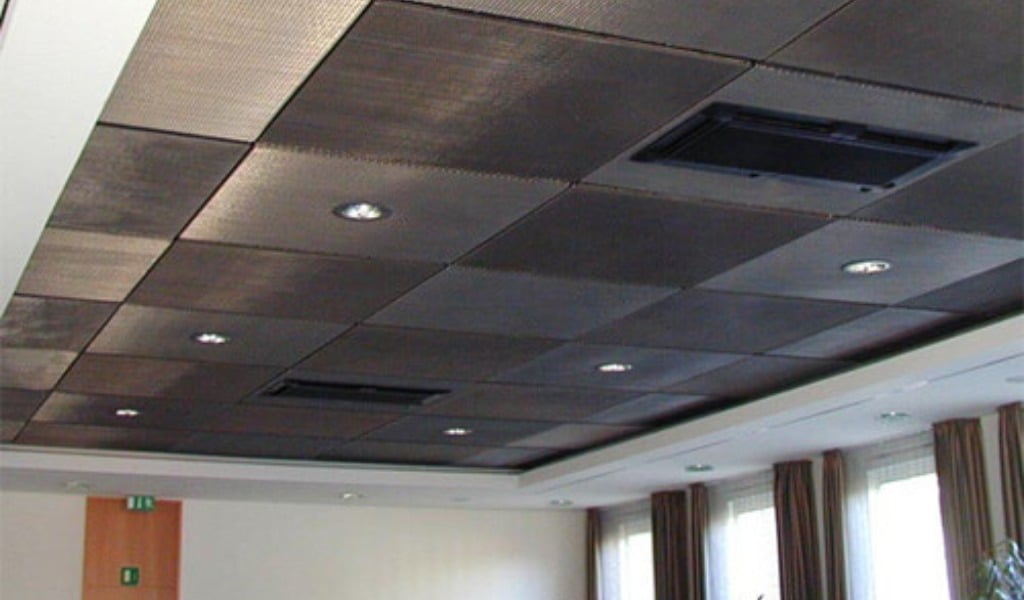How Can Architectural Wire Mesh Be Attached? (Methods and Limitations)
Architectural Mesh - Exterior | Architectural Mesh - Interior
Creating designs that turn heads and create an unforgettable experience. This means you must identify design materials that have the ability to turn your vision into a reality while providing the durability needed to stand the test of time.
The lustrous stainless steel profile of architectural wire mesh does just that, offering the customization and artistic freedom needed to make virtually any structure stand out. But if you choose to move forward with an architectural mesh-inspired design, it is essential that you understand the ways you can mount your mesh panels.
Having helped architects weave wire mesh into their architectural design process for over 20 years, W.S. Tyler feels that transparency is of the utmost importance when introducing design solutions to the market.
It's for this reason that the following article is all about the different ways architectural wire mesh panels can be mounted, giving you a better understanding if it's the right material for you. You will learn:
- The different ways architectural mesh is installed
- The limitations you may encounter when installing mesh
- How the way your architectural mesh is mounted affects the installation process
- How the way your architectural mesh is mounted affects cost
What Are the Different Ways Architectural Mesh Can Be Installed?
 |

|
Architectural mesh is most commonly installed vertically or from the top of a structure to the bottom. That said, architectural mesh panels can also be mounted horizontally.
This typically comes in the form of a ceiling design in which the mesh panels are laid flat and used as dropdown panels. However, even when using the mesh for a facade application, the mesh panels can be tensioned from side to side.
What Limitations Are Associated With Architectural Mesh Installation?
When it comes to vertical applications, the underlying limitation associated with architectural mesh is that panels can only reach a dimension of 10 feet wide. This is because this is the widest our weaving looms are designed to achieve.
That said, you do need to be mindful that an intermediate is placed every 10 feet.
Additionally, as the mesh panels get taller, the tensioning loads of the system will increase. You will need to make sure that the substructure is strong enough to withstand the weight and load of your panels.
For horizontal applications, specifically ceiling applications, the main concern is having a way to pull the mesh back towards the ceiling every 10 feet. If you had a ceiling that was 30 feet long, neglecting to have hardware pulling the mesh back, it would begin to sag.
This is unless the sagging or bowing is a part of the design.
Now, when tensioning a panel from side to side, you will want to have a channel that runs along the bottom edge. This is because, again, the mesh will want to sag as you get close to the center.
How Do the Different Mounting Options Affect the Installation Process?
Regardless of if your mesh is installed vertically or horizontally, the mesh is installed the same way. In other words, all mesh panels will have to be pulled into tension.
With a vertical panel, all that you need to do is install the attachment hardware, hoist the panel up, and slowly unroll it. When you are tensioning the panel from side to side, you're going to need to work out the logistics of unrolling the mesh across the length of the building.
When unraveling the mesh from top to bottom, the machinery you use will work in conjunction with gravity and minimize the amount of manpower needed. When unraveling the mesh from side to side, you have to make sure someone is tracking that it's going across properly.
This generally means side-to-side installations are more labor-intensive.
How Do the Different Mounting Options Affect Cost?
The only way the different mounting options affect the cost of the order will be seen in the framework your system will need. That said, the way you mount your mesh will not affect the cost of the mesh itself.
So when dropping mesh panels into a ceiling application, you may need more intermediates to make sure you don't have unsightly sagging or bowing. You also need more robust substructure than a typical mesh system because gravity is going to pull the weight of the mesh down.
If you are mounting your mesh panels from side to side, you are going to need that additional supportive channel at the bottom. This, of course, requires more material and will naturally increase the cost.
Ensure You Have Adequate Substructure
Architectural wire mesh holds the ability to be mounted vertically, side to side, or completely flat to weave your vision into a reality. Regardless of how you choose to mount your architectural wire mesh panels, they will still need to be tensioned, and the price of the mesh itself will not change.
The factor that does change depending on mounting is the amount of substructural support it is attached to. Failure to incorporate adequate substructure at each end of an architectural wire mesh panel can hinder the mesh's eye-catching qualities, cause damage to your structure, and, more importantly, potentially put visitors in harm's way.
W.S. Tyler has helped architects navigate the world of architectural mesh, providing insight into all aspects of what they need to successfully and safely leverage the possibilities of wire architectural wire mesh.
That's why we wrote the article below to teach you about the structural calculations that contractors should follow to ensure your architectural wire mesh panels are properly mounted:
About Ronnie Brown
Ronnie is the Content Writer for W.S. Tyler and has four years of experience as a professional writer. He strives to expand his knowledge on all things particle analysis and woven wire mesh to leverage his exceptional writing and graphic design skills, creating a one-of-a-kind experience for customers.




